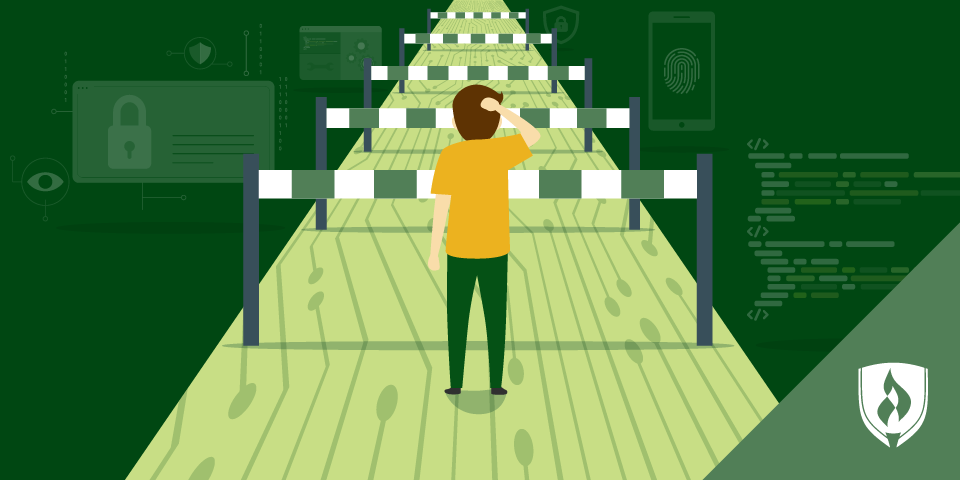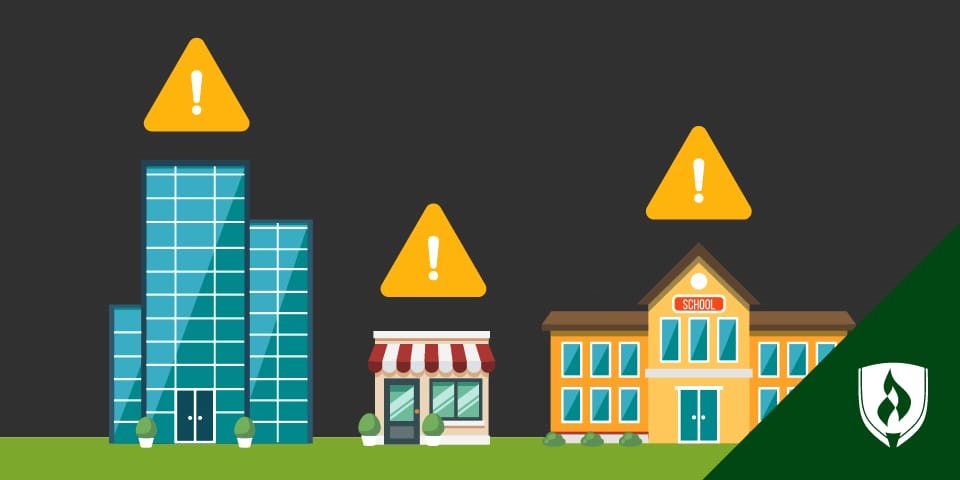Social Media Security: 6 Hacking Tricks You Never Thought You'd Fall For [Infographic]
By Anna Heinrich on 10/02/2017
Hacking is no joke, but what you may not realize is that it extends beyond emails and can happen to even the most private of users. But an avid social media user like yourself thinks you may have common sense when it comes to posting information. You know not to post any sensitive data and you think you can spot a hacker a mile away. When it comes to social media security, you’re a pro, right?
Don’t be so sure. The truth is that 64 percent of Americans have experienced a major data breach, with 13 percent saying someone has gained access to one of their social media accounts. And contrary to what you may believe about your own safety, hackers target everyone, from lone teenagers to multi-million dollar corporations. If you don’t take the proper precautions, you could be next.
Join us as we explain six of the most common and overlooked ways hackers threaten your social media security. The more you know, the better you can prepare.
“Social Media Security: 6 Hacking Tricks You Never Thought You’d Fall For” Infographic
The subheading reads: You’ve seen all the headlines and heard all the warnings‚Äîhackers are everywhere. But you’re no dummy! You’d never fall for their spammy pop-ups or fishy emails. But did you know that those sneaky cyber criminals are also lurking within your favorite social networks? Be on the lookout for these 6 sneaky social media security attacks.
Toward the top is an animation of someone clicking on a mouse, presumably opening an email and then finding out that the email was spam.
Beneath that, there is an animation with someone making the shushing gesture that also reads: “You’ll Never Believe What People Are Saying About You!” To the right of that is the heading, “Like-Jacking.” The text reads: The “like” button is everywhere on Facebook, making it a no-brainer for hackers to manipulate. Hackers will create content that lures users into clicking the “Like” button to receive a reward. This content ranges from sensationalist headlines to images of sick children with the promise that Facebook will donate money for every “Like.” But as soon as you click that “Like” button, hackers unleash viruses onto your account.
Scrolling down, we see “Click-Jacking.” The text reads: Similar to like-jacking, click-jacking lures social media users of multiple platforms away from a secure site and onto an infected site. Clicking the link means you’re not only downloading malware onto your device, but your hacked social media account also blasts the link out to all of your friends, spreading the virus. The animation to the right shows a woman who presumably clicked on an infected site and is frantically trying to escape from it while the virus spreads.
Further down is social engineering. This social media threat is different in that hackers directly manipulate users into giving up sensitive information‚Äîit’s more of a trap than a direct attack. An example is baiting: Hackers may offer a download of the latest music or movie. And not all of it is free‚Äîthey may coax you with the promise of cheaper products, which requires your credit card and billing information. Remember: If something seems too good to be true, then it’s probably not worth the risk. The animation shows an eager consumer rushing toward some music, underneath a trap activated by a string, which is held by a thief waiting to trap the user.
Below that is self-XSS attacks. Self-cross-site scripting attacks are a form of social engineering. Hackers lure Facebook users to copy and paste a web address in their browsers. People fall for this because they are promised rewards such as gaining access to other Facebook accounts or winning money. But attempting to do this unleashes a malicious bug, which then compromises the user’s own account. The animation next to this shows two bags of money with its contents increasing and decreasing.
Following that is spear phishing. Spear phishing is targeted phishing, meaning hackers select a person or group and gather as much information about them as possible. Using that information, hackers then communicate with victims, pretending to be someone the victim trusts. On social media, you may see this through the creation of fake accounts. Hackers will commonly create false profiles that mimic important officials or other people victims may know, and eventually attempt to solicit money from the unsuspecting users. The animation with this shows a thief sitting on a dock with a fishing pole, trying to lure a user toward their ¬†bait with “Help!” on it. The consumer looks perplexed and confused about the situation.
Finally, there’s Facebook scams. From finding out your soulmate to discovering which Harry Potter character you are, there’s an online quiz out there for just about everything. These quizzes trick users into divulging personal information. Hackers then manipulate their victims into giving up addresses, their mothers’ maiden names, salary information, birthdates and much more. This seemingly harmless hack can eventually lead to identity theft. The animation alongside this shows two different quizzes: “Which Harry Potter Character Are You? Find Out Now” and “Who Is Your Soulmate? Click below to find out! Find Out Now.”
Below that, a summary says: Outsmart the scammers. Now that you’re aware of their secrets, you can step up your social media security game to protect against hackers. Share this on your social media accounts to ensure your friends and family don’t fall for their tricks. An animation of a padlock snapping shut is shown
![Social Media Security: 6 Hacking Tricks You Never Thought You'd Fall For [Infographic]](/images/rasmussenlibraries/blogs/social-media-security-infographic-3-.gif)
How to Keep Your Social Media Secure
You’re now aware of some of the most common social media security threats out there. Being informed is the first step in protecting yourself. But what else should you be doing to avoid falling victim to these sneaky hackers?
Here are a few tips and tricks to help ensure your social media security is up to par:
- Two factor authentication: Many people are not aware that sites such as Facebook and Twitter have options for two factor authentication (2FA). This security measure requires users to both know something (a password, PIN or ID) and have something (a phone or card). Having 2FA protects you in case your password is compromised because a hacker will not be able to access your account and oftentimes you will be alerted if someone does try logging in as you.
- Use different passwords: If you use the same password for several accounts, you’re certainly not alone. But it’s time you break apart from the crowd and create unique passwords for each of your accounts. That way, if one account is compromised, the others will still be safe. One tip is to use a password management system to help keep track of which password is used where.
- Create strong passwords: The strongest passwords contain at least one uppercase letter, one number and a special character. Do not use a word that could be easily guessed, such as your dog’s name or favorite sport. The more random, the better.
- Post smartly: Never post information that could be used against you. This includes your mother’s maiden name, your address or other personal information. Even if you think only your friends can see it, it’s better to be safe than sorry.
- Be skeptical: Any link that seems too good to be true is probably too good to be true. Here’s a trick: If you hover your cursor over a link, in the bottom left hand corner of your screen you will see the actual URL. If you don’t recognize the site, or it seems like a strange URL, do not click.
Stay safe out there
Don’t become another statistic. Use these tips to amp up your social media security so you don’t become the next cybercrime victim.
Hackers are everywhere, but did you know that not all hackers are bad? Ethical hackers work to protect people like you from the dangers that lurk within the internet. Interested in learning more about these white hat heroes? Check out our article “Types of Hackers: White Hat vs. Black Hat & Every Shade in Between.”
RELATED ARTICLES:




